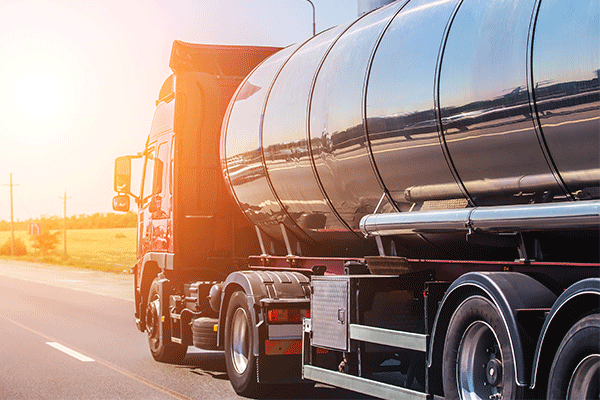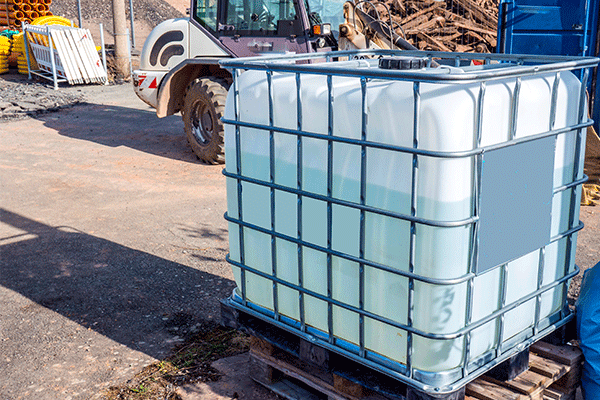- Tanker endorsement definition
- When tanker endorsements are required
- The difference between tanker endorsements and hazmat endorsements
- Tanker endorsements and freight rates
Keeping up with the intricacies of this industry, in addition to your other daily duties, can be a difficult task. The transportation world is rich with terms and phrases, rules and regulations, and enough service options to make your head spin.
Tanker endorsements are just one of the many certifications truckers may seek to diversify their freight and distinguish themselves from other drivers on the market. They may be required to safely and legally haul your freight if you ship certain commodities.
Anderson Trucking Service (ATS) has served shippers like you for over 65 years, during which time we’ve seen truck driver tanker endorsements evolve into what they are today. Many drivers in the ATS fleet have and maintain tanker endorsements of their own.
Let’s discuss everything you need to know about tanker endorsements so that you’re better prepared to move your bulk liquid/gas successfully and legally in the future.
What is a Tanker Endorsement?
A tanker endorsement is a certification attached to a trucker’s commercial driver’s license (CDL) signifying their legal ability to transport bulk quantities of liquids and gasses via truck.
Signified by the letter N, drivers with these endorsements have passed all of the legally mandated safety and equipment training needed to haul these products.
Transporting bulk liquids, especially without the proper training, can be incredibly dangerous for drivers which makes giving them the tools to succeed and do so safely absolutely vital.
Through proper training and testing, the FMCSA can ensure that each driver transporting these bulk commodities is capable of keeping him/herself and everyone around them safe.
Unlike a firmly strapped freight shipment, thousands of pounds of liquid shifting and sloshing continuously during transport can greatly influence the momentum of a semi-truck.
In the worst cases, unprepared drivers can be sent into busy intersections, other vehicles or overturn their semis due to the violent shifting of liquid commodities.
As such, understanding the proper methods for maneuvering this freight around the bends of interstate highways and through city stop lights is vital to keeping the motoring public, and the truckers behind the wheel, safe.

When is a Tanker Endorsement Required?
Very generally, a tanker endorsement is required when a trailer or freight meets the "tank" criteria laid out by the Federal Motor Carrier Safety Administration (FMCSA).
Under the FMCSA's definition, a "tank" is:
- Any commercial vehicle that’s designed to transport liquid or gas within one or more tanks that have an individual capacity of more than 118 gallons each.
- 1,000 gallons or more of liquid or gas that is attached to the commercial motor vehicle in transit.
Any drivers hauling a tank or moving liquid or gas that meets these criteria need a tanker endorsement to legally do so.
Be it a dry van carrying two 120-gallon intermediate bulk containers (IBCs) of liquid, or a tanker full of 1,000 gallons of fresh milk, tanker endorsements help ensure that only the most qualified drivers are responsible for these commodities.
Individually packaged bottles of liquid don’t require a tanker endorsement (even if they exceed 1,000 gallons in gross volume), as these commodities don’t meet the FMCSA’s guidelines for “individual capacity of more than 118 gallons.”
Is a Tanker Endorsement the Same as a Hazmat Endorsement?
A tanker endorsement is a CDL certification separate from a regular hazmat endorsement.
Although these endorsements are often earned at the same time — as many tanker shipments are also hazardous (i.e. gasoline or propane) — drivers earn hazmat endorsements for possessing a separate set of knowledge and competencies.
When earned, drivers are given the “H” endorsement to signify their completion of the Hazmat test. Conversely, strictly tanker drivers are given the “N” endorsement.
If a driver passes a written exam that covers both tanker and hazmat transportation, they can earn an "X" endorsement, which authorizes them to transport mass quantities of hazardous liquids and gases — a truly specialized service offering.
Does Requiring a Tanker Endorsement Impact Shipping Price?
If you’re a shipper whose liquid or gaseous freight falls within the 119+ gallon (per container) or 1,000+ gallon (gross) volume thresholds, finding a provider that possesses a tanker endorsement may cost you a bit more than your average dry van.
Earning and holding a tanker endorsement is an investment of that driver’s resources and time which means that not all truckers possess these certifications. As such, finding a tanker-endorsed driver for your shipment may raise the price of moving your freight slightly.
The final price you pay is, of course, subject to a multitude of factors. That said, finding a carrier with your freight’s required tanker endorsement can certainly influence your final price, especially if the supply of these specialized drivers is low in your area.
Even though it’s hard to predict these things in such a dynamic industry, you should expect to pay a bit more to secure a driver with an “N” endorsement than one without.
Understand Your Freight’s Requirements

Now that you understand what a tanker endorsement is, when it’s needed — in a couple of different circumstances —and how they’re earned, let’s talk about why they’re so important.
Tanker endorsements — and all governmental CDL certifications for that matter — are designed to keep everyone on the roads and behind the wheel safe.
Our economy needs the trucking industry to survive, no matter how dangerous it can be and tanker endorsements are just one way that safety is prioritized on the road.
For these endorsements to function as intended, shippers need to understand when they're necessary.
Failing to inform your transportation partner about the specifications of your freight — and therefore your requirement of a tanker endorsed driver — can be highly damaging to the carriers moving your commodity and the safety of all parties.
As such, always make sure to clearly, transparently and truthfully outline the intricacies of your shipments including how many gallons need to be moved and how each liquid/gas is packaged.
This information will help your provider ensure that when a trucker shows up for your freight, they possess all necessary endorsements to do so correctly, legally and safely.
Remember, no matter what type of liquid or gas, if your freights volume fits these categories, you’ll need a tanker endorsed driver:
|
#1 Liquid or gas within one or more tanks that have an individual capacity of more than 118 gallons each. |
#2 1,000 gallons or more of liquid or gas that is attached to the commercial motor vehicle in transit. |
If you’d like to talk more about how tanker endorsements relate to your freight, or have any additional questions about getting your freight moved, reach out to us here at ATS. We’re always happy to help you meet your goals, whatever they may be.





